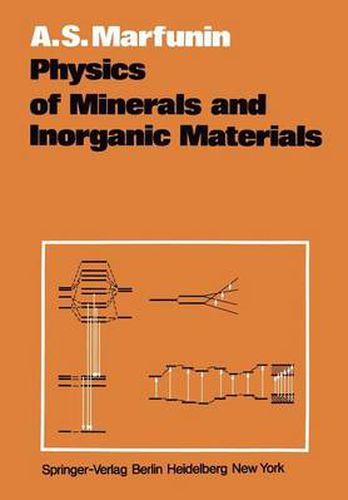Readings Newsletter
Become a Readings Member to make your shopping experience even easier.
Sign in or sign up for free!
You’re not far away from qualifying for FREE standard shipping within Australia
You’ve qualified for FREE standard shipping within Australia
The cart is loading…






This title is printed to order. This book may have been self-published. If so, we cannot guarantee the quality of the content. In the main most books will have gone through the editing process however some may not. We therefore suggest that you be aware of this before ordering this book. If in doubt check either the author or publisher’s details as we are unable to accept any returns unless they are faulty. Please contact us if you have any questions.
The physics of minerals in a broad sense implies the fundamental aspects of understanding mineral matter: the electronic structure of atoms related to their behavior in geochemical processes; the atomic and electronic structures of minerals; the properties of minerals, with their genetic, geophysical, and technical significance, and their pressure and temperature dependence; the mechanisms of phenomena and reactions in mineral formation and transformation processes; the physical me thods applied in mineralogical, geochemical and petrological studies, and to a great extent in geological surveys and prospecting. In a narrower sense, it is a branch lying in the border area between mineralogy and solid-state physics, dealing with those aspects of mine ralogy which require, for their understanding and investigation, special knowledge in contemporary physics and chemistry of solids. The physics of minerals accounts for the third crucial change within this century in the conceptual foundations of mineralogy: after physi cochemical mineralogy, from experimental studies of phase relations to parage netic analyses, and crystal chemistry of minerals, there followed solid-state physics, which has evolved to its present state over the past 25 years. The task of mineralogy has expanded greatly. In addition to the identification and description of minerals, it is becoming necessary to establish the relationships between structure, composition and properties of minerals and their genesis, their distribution within geological regions, magmatic, metamorphic and sedimentary formations and types of ore deposits. The development of new methods of investigation requires an understanding of the physical meaning of the parameters under evaluation.
$9.00 standard shipping within Australia
FREE standard shipping within Australia for orders over $100.00
Express & International shipping calculated at checkout
Stock availability can be subject to change without notice. We recommend calling the shop or contacting our online team to check availability of low stock items. Please see our Shopping Online page for more details.
This title is printed to order. This book may have been self-published. If so, we cannot guarantee the quality of the content. In the main most books will have gone through the editing process however some may not. We therefore suggest that you be aware of this before ordering this book. If in doubt check either the author or publisher’s details as we are unable to accept any returns unless they are faulty. Please contact us if you have any questions.
The physics of minerals in a broad sense implies the fundamental aspects of understanding mineral matter: the electronic structure of atoms related to their behavior in geochemical processes; the atomic and electronic structures of minerals; the properties of minerals, with their genetic, geophysical, and technical significance, and their pressure and temperature dependence; the mechanisms of phenomena and reactions in mineral formation and transformation processes; the physical me thods applied in mineralogical, geochemical and petrological studies, and to a great extent in geological surveys and prospecting. In a narrower sense, it is a branch lying in the border area between mineralogy and solid-state physics, dealing with those aspects of mine ralogy which require, for their understanding and investigation, special knowledge in contemporary physics and chemistry of solids. The physics of minerals accounts for the third crucial change within this century in the conceptual foundations of mineralogy: after physi cochemical mineralogy, from experimental studies of phase relations to parage netic analyses, and crystal chemistry of minerals, there followed solid-state physics, which has evolved to its present state over the past 25 years. The task of mineralogy has expanded greatly. In addition to the identification and description of minerals, it is becoming necessary to establish the relationships between structure, composition and properties of minerals and their genesis, their distribution within geological regions, magmatic, metamorphic and sedimentary formations and types of ore deposits. The development of new methods of investigation requires an understanding of the physical meaning of the parameters under evaluation.